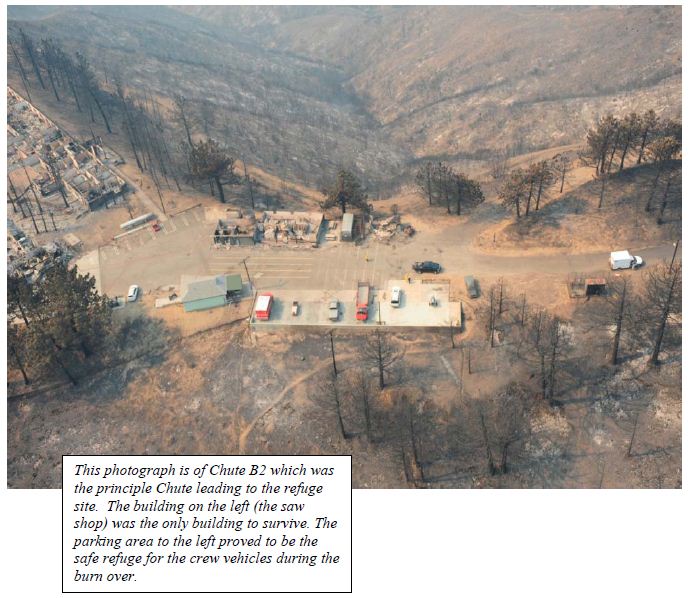 The Los Angeles County Fire Department has released the Factual Report about the August 29, 2009 burnover of Camp 16 on the Station fire near Los Angeles. During that burnover, two firefighters were killed, Fire Captain Ted Hall, Superintendent 16, and Fire Fighter Specialist Arnie Quinones, Foreman Crew 16-3. Hall and Quinones were implementing a planned burnout below Camp 16 when their vehicle left the road. It was found 800 feet below the road with the two deceased firefighters inside.
The Los Angeles County Fire Department has released the Factual Report about the August 29, 2009 burnover of Camp 16 on the Station fire near Los Angeles. During that burnover, two firefighters were killed, Fire Captain Ted Hall, Superintendent 16, and Fire Fighter Specialist Arnie Quinones, Foreman Crew 16-3. Hall and Quinones were implementing a planned burnout below Camp 16 when their vehicle left the road. It was found 800 feet below the road with the two deceased firefighters inside.
The images are from the report; click on them to see larger versions. Below are the causal and contributing factors from the report.
==============================================
Causal and Contributing Factors
Causal Factors
Causal Factors are any behavior, omission, or deficiency that if corrected, eliminated, or avoided, probably would have prevented the incident.
1. The decision to protect Camp 16 and shelter in place and allow the firing operation was made at the Battalion Chief’s management level without contact with the Station IMT.
2. The lack of contact with the Station Incident prevented Camp 16 leadership from knowing about predicted fire behavior and available resources.
3. The firing operation on the Mt Gleason road was not successful due to the extreme fire behavior which exceeded the prediction of the plan.
Contributing Factors
Contributing Factors are any behavior, omission, or deficiency that sets the stage for an accident, or increases the severity of injuries.
1. The organizational culture allows firefighters to accept a notably higher risk to protect structures on wildland fires. A sense of ownership may have also influenced the decision to defend the facility.
2. The south winds aloft and prevailing up-canyon winds aligned with the topography of the North Fork of the Mill Creek drainage resulting in rapid fire progression toward Camp 16 and the firing team on the mid-slope road.
3. The fire burned in rugged terrain and the burnover occurred in the upper end of a steep drainage with fuel loads at seasonal low fuel moisture levels.
4. Resources assigned to Camp 16 were utilizing two different frequencies for tactical discussions and reports. Effective communication controls were not in effect prior to the incident.
5. There was no lookout dedicated to the firing operation.
6. The Station Fire IMT was either unaware of the threat to Camp 16 or understaffed to provide any assistance.
7. The ninety-year period of no fires in the vicinity of Camp 16 provided no historic baseline for reference.


